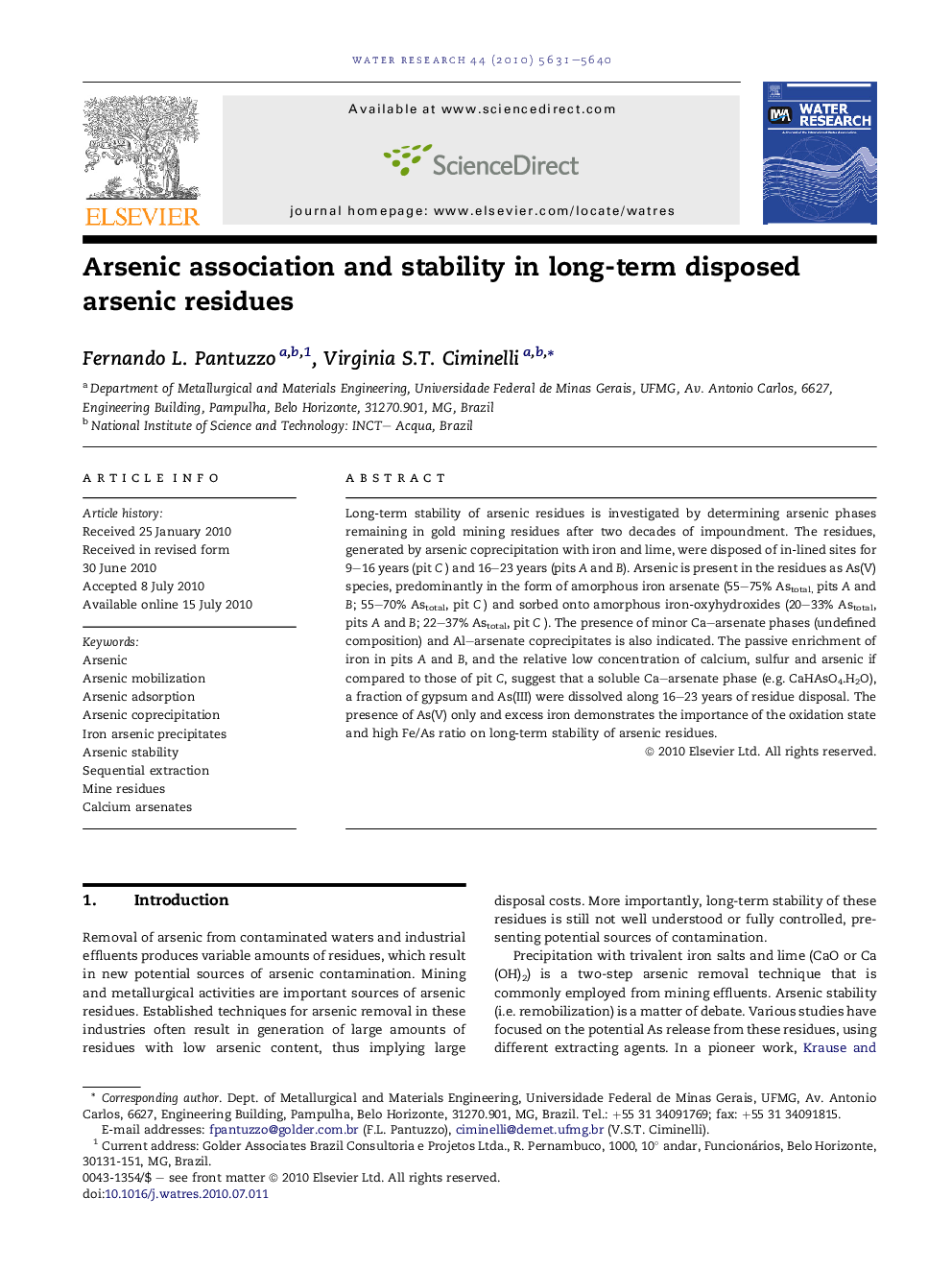| Article ID | Journal | Published Year | Pages | File Type |
|---|---|---|---|---|
| 4484554 | Water Research | 2010 | 10 Pages |
Long-term stability of arsenic residues is investigated by determining arsenic phases remaining in gold mining residues after two decades of impoundment. The residues, generated by arsenic coprecipitation with iron and lime, were disposed of in-lined sites for 9–16 years (pit C) and 16–23 years (pits A and B). Arsenic is present in the residues as As(V) species, predominantly in the form of amorphous iron arsenate (55–75% Astotal, pits A and B; 55–70% Astotal, pit C) and sorbed onto amorphous iron-oxyhydroxides (20–33% Astotal, pits A and B; 22–37% Astotal, pit C). The presence of minor Ca–arsenate phases (undefined composition) and Al–arsenate coprecipitates is also indicated. The passive enrichment of iron in pits A and B, and the relative low concentration of calcium, sulfur and arsenic if compared to those of pit C, suggest that a soluble Ca–arsenate phase (e.g. CaHAsO4.H2O), a fraction of gypsum and As(III) were dissolved along 16–23 years of residue disposal. The presence of As(V) only and excess iron demonstrates the importance of the oxidation state and high Fe/As ratio on long-term stability of arsenic residues.
